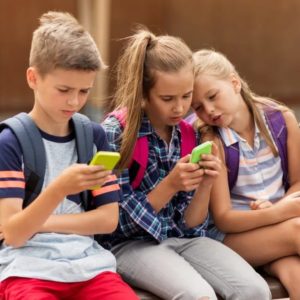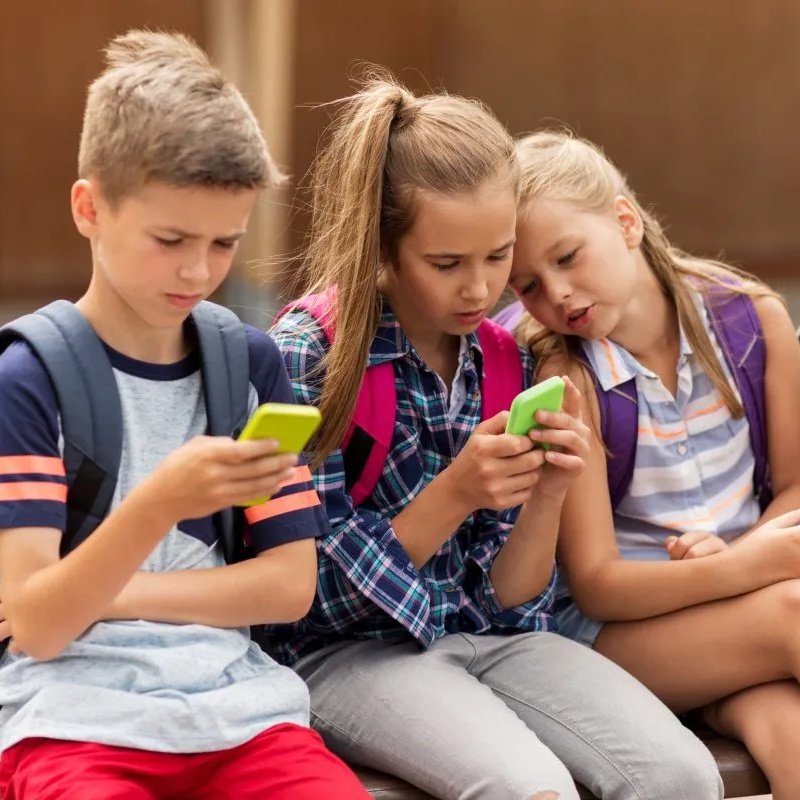
By Adeyemi Adekunle
To address the challenges posed by smartphones in educational environments, Brazil’s President Luiz Inácio Lula da Silva has signed a bill restricting the use of mobile phones in elementary and high schools.
The bill, which will come into effect in February 2025, is part of a global trend toward curbing smartphone usage among students, spurred by growing concerns over their impact on mental health, focus, and social interaction. This new legislation marks a pivotal step in the South American country’s effort to balance technology and education.
The law permits smartphone use only in cases of emergencies, for educational purposes, or for students with disabilities who require such devices. Education Minister Camilo Santana, addressing journalists in the nation’s capital, Brasilia, emphasized that the law is intended to ensure mobile phones are not used for recreational purposes during school hours.
“We want those devices, as in many other countries, to only be used in class for pedagogical purposes and with a teacher’s guidance,” Santana explained, pointing to the increasing presence of digital technology in children’s lives at younger ages, which can complicate parental supervision.
Remarkably, the bill has garnered bipartisan support across Brazil’s political spectrum, uniting both the government’s left-leaning allies and the far-right wing, including supporters of former President Jair Bolsonaro.
The law also enjoys popular backing, particularly from parents and educators who are increasingly concerned about the distractions and negative consequences of smartphone use in schools. A recent survey by Datafolha, a Brazilian polling agency, revealed that nearly two-thirds of respondents back the restriction, with more than 75% acknowledging that smartphones do more harm than good to children.
Ricardo Martins Ramos, a 43-year-old parent from Rio de Janeiro, is one such supporter. As the father of two girls, Ramos has observed firsthand the detrimental effects of smartphones on his children’s focus in school.
“It is tough, but necessary,” Ramos said, noting that while smartphones can be useful for educational research, their social use in school environments disrupts the learning experience. His daughter Isabela, 13, echoed these concerns, noting that her classmates often struggled to concentrate because of their smartphones. “When the teacher lets you use the cell phone, it’s because he wants you to do searches,” Isabela explained. “But many students are not able to focus on class when they have their phones.”
However, the younger Ramos sees some areas for further improvement in the school environment. Despite supporting the ban on smartphones, she believes other issues, such as bullying, also need to be addressed for an ideal learning environment to thrive. Her comments reflect broader conversations in Brazil’s education system about how technology intersects with psychological and social issues affecting students.
Prior to the nationwide law, several Brazilian states had already started to tackle smartphone distractions at the school level. States such as Rio de Janeiro, Maranhao, and Goias had passed their own legislation to ban smartphones in schools, though enforcement has been difficult. The new national law seeks to standardize the policy, making it a nationwide effort to combat the growing problem.
In São Paulo, the most populous state in Brazil, authorities are still deliberating whether the smartphone ban should apply to both public and private schools, with many calling for similar measures.
Gabriele Alexandra Henriques Pinheiro, a 25-year-old mother from Rio de Janeiro, agrees with the law, particularly as her own son, who is diagnosed with autism spectrum disorder, struggles with the overwhelming presence of smartphones. “It is tough,” she acknowledged, admitting that she, too, finds it difficult to limit screen time for her son while managing her daily tasks. “But adults are bad examples when it comes to smartphone use, which makes it harder to restrict children.”
Despite the restrictions at schools, Pinheiro believes parents and society as a whole still need to do more to model responsible technology use.
Her sentiments speak to the larger cultural issue at play — how smartphones are used as tools for convenience, but often become obstacles to meaningful social interactions and mental well-being.
Brazil’s new law places it among a growing number of countries around the world that have started addressing the role of smartphones in the lives of young people, especially in educational contexts. The trend has accelerated in recent years, driven by increasing concerns about the potential negative effects of smartphones on children’s mental and emotional health.
In countries like China and France, similar policies have already been enacted. France, for example, has had a law in place banning smartphones for students aged six to 15 in schools since 2018.
In China, the government moved swiftly in 2024 to restrict smartphone use, spurred by rising fears of online addiction and exposure to harmful content. Meanwhile, in the United States, several states have begun implementing their own measures to limit smartphone usage, with at least eight states passing laws that either ban or heavily restrict phones in classrooms to minimize distractions and enhance students’ attention.
Globally, research has highlighted the risks posed by prolonged smartphone use, such as mental health issues, anxiety, depression, and the disruption of attention necessary for learning. UNESCO, the United Nations Educational, Scientific and Cultural Organization, reported in September 2024 that approximately one in four countries has implemented some form of restriction on smartphone use in schools, signaling an increasing global consensus on the need for greater regulation of technology in children’s lives.
Despite the wide approval, the new law has not been without its critics. Some argue that while restricting smartphones in schools may mitigate the immediate distractions they cause, it fails to address the deeper, structural issues facing modern education systems. Critics argue that this focus on technology could divert attention from more fundamental concerns, such as the adequacy of educational resources, teaching standards, and infrastructure.
Furthermore, the law’s implementation could face challenges. With nearly two-thirds of Brazilian schools already imposing some form of restriction, educators and school officials must now adapt to a nationwide framework, requiring new protocols, monitoring systems, and potential investment in technology for learning. Some teachers fear that restrictions might hinder their ability to use smartphones as tools for research and educational enhancement in certain classroom settings.
The debate over smartphones in schools is complex, with no easy answers. As smartphones become increasingly woven into the fabric of young people’s lives, their potential for both positive and negative outcomes grows ever clearer. On one hand, smartphones can empower students to access vast knowledge and connect with educational resources. On the other, the impact on concentration, social behavior, and mental health cannot be overlooked.
For Brazil, the new law reflects a growing awareness of these competing concerns. While it is clear that smartphones will remain an integral part of modern life, balancing their use with students’ educational and emotional needs will continue to be a work in progress.
There is huge aspiration that as Brazil take steps to implement regulation, the hope is that these measures will promote healthier, more focused educational environments while ensuring that technology serves its intended purpose — to enhance, rather than hinder, learning.




